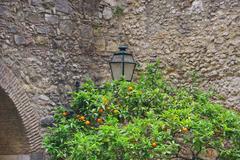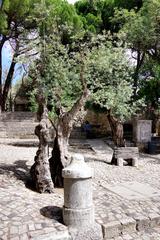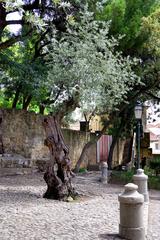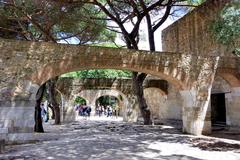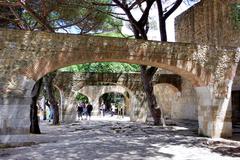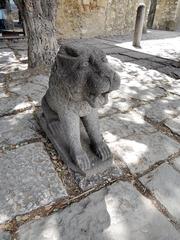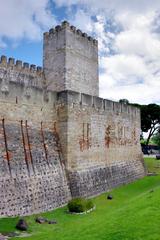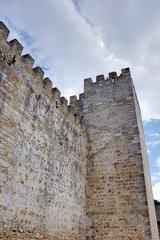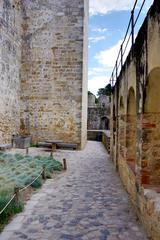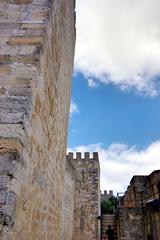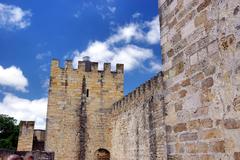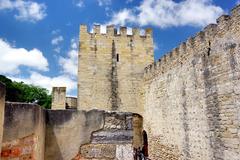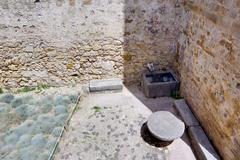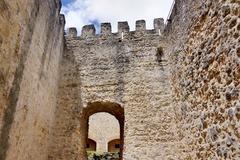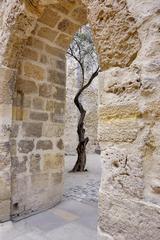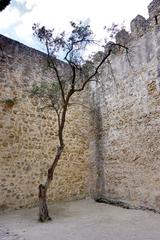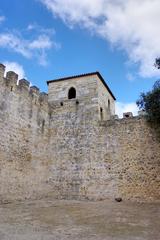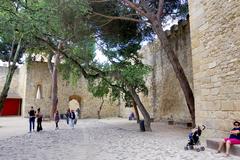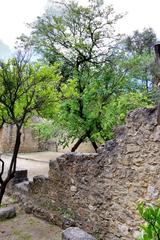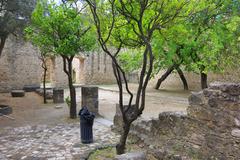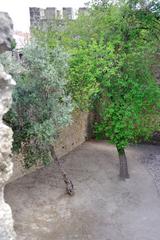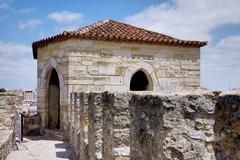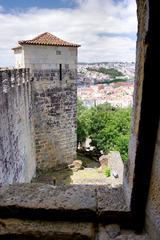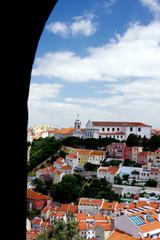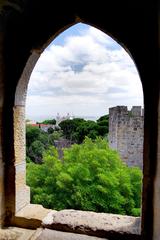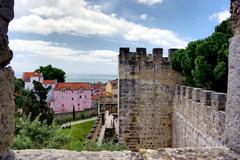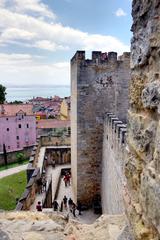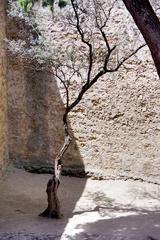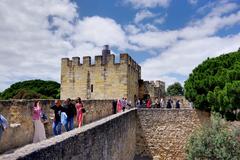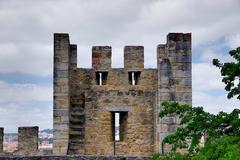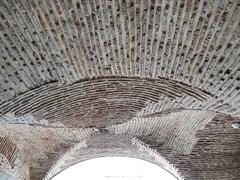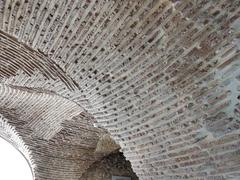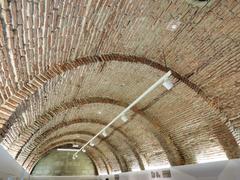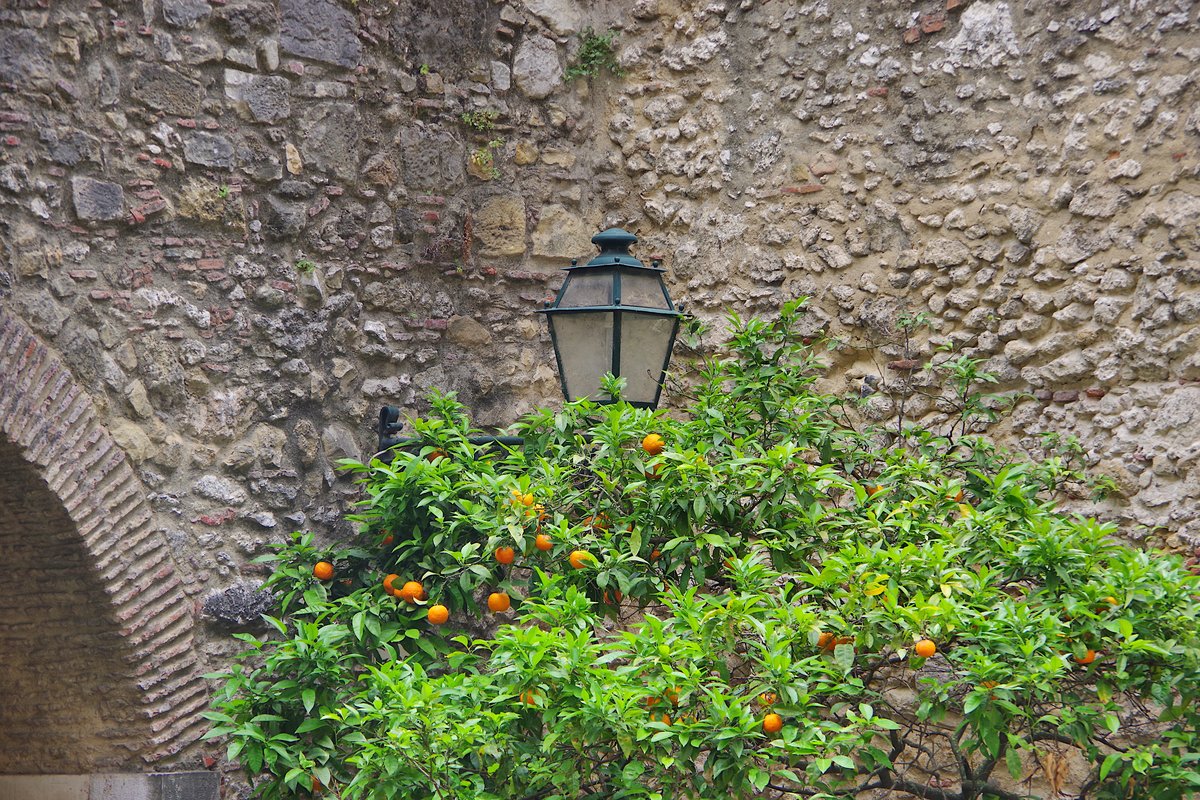
Castle of Saint George Lisbon: Visiting Hours, Tickets, and Travel Guide
Date: 14/06/2025
Introduction
Rising majestically above Lisbon’s historic Alfama district, the Castle of Saint George (Castelo de São Jorge) is a monumental symbol of the city’s enduring history and culture. With roots tracing back to at least the 8th century BC, this hilltop fortress has played a pivotal role in the defense, governance, and urban evolution of Lisbon. Today, its restored ramparts, medieval towers, and tranquil gardens offer visitors a captivating journey through centuries of Portuguese heritage. This guide provides a thorough overview of São Jorge Castle’s history, architectural highlights, practical visitor information, ticketing, accessibility, and essential travel tips to ensure an enriching experience at one of Lisbon’s most treasured landmarks. For additional details, consult trusted guides and the castle’s official resources (Lisbon Guide; Lisbon Tourism; Discover Portugal).
Contents
- Historical Overview
- Architectural Features and Archaeological Discoveries
- Visiting São Jorge Castle: Practical Information
- Nearby Attractions
- Frequently Asked Questions (FAQ)
- Conclusion and Visitor Recommendations
- Sources and Further Reading
Historical Overview
Ancient Foundations and Early Fortifications
Archaeological findings confirm continuous human settlement on the castle’s hilltop since at least the 8th century BC. Early occupants included Celts, Phoenicians, Greeks, and Carthaginians, all drawn to the strategic vantage over the Tagus River (Wikipedia). The earliest defensive walls date back to the Roman era, when Lisbon (then Olisipo) became a Roman municipality. These fortifications established the site’s enduring military significance (History Hit).
Visigothic and Moorish Eras
After the fall of the Western Roman Empire, the site passed through Suebic and Visigothic hands before the Moors seized control in the 8th century. The Moors constructed the robust “Cerca Moura” (Moorish Wall) and established the fortress as the Alcáçova, serving both defensive and residential functions (Lisbon Guide). These enhancements laid the groundwork for the castle’s medieval layout.
The Christian Reconquest and Royal Ascendancy
A defining moment in the castle’s history was the Siege of Lisbon in 1147, when Afonso Henriques, aided by Crusaders, captured the fortress from the Moors (Lisbon Guide). This victory marked the beginning of Portuguese control over Lisbon and led to the castle’s dedication to Saint George, reflecting the Anglo-Portuguese alliance. The castle then became the royal palace (Alcáçova) and the administrative heart of the kingdom (Lisbon Tourism).
Decline, Earthquake, and Restoration
The castle’s prominence waned after the royal court moved to Ribeira Palace in the 16th century. The devastating 1755 earthquake caused considerable damage, leaving only the core walls, towers, and some rooms intact (Lisbon Tourism). Restoration efforts in the 20th century revitalized the site, restoring much of its medieval character and opening it to the public as a national monument.
Architectural Features and Archaeological Discoveries
Castle Layout and Defensive Structures
The castle’s nearly square plan is defined by robust limestone and granite curtain walls, crenellated battlements, and eleven towers including the notable Ulysses Tower (Torre de Ulísses), which houses the Camera Obscura (Portugal.com). The main gate, historically protected by a drawbridge and portcullis, is adorned with a statue of Saint George (LisbonLisboaPortugal.com).
Moorish and Medieval Influences
The castle’s architecture reflects layers of Islamic, Romanesque, Gothic, and Manueline styles. Moorish horseshoe arches and geometric stonework can still be seen, while later Christian modifications introduced Gothic vaults and Manueline decorative details, especially in the palace and chapel areas (Lisbon Tourist Information).
Archaeological Site and Museum
Excavations within the castle grounds reveal remains from the Iron Age, Roman, Moorish, and medieval Christian periods. The on-site museum displays artifacts such as ceramics, coins, and tools, offering insights into Lisbon’s complex history (ZigZag On Earth).
Camera Obscura and Panoramic Views
The Camera Obscura, located in the Ulysses Tower, provides a unique optical tour of Lisbon, projecting a live 360-degree image of the city. The ramparts and towers offer sweeping views over Alfama, the Tagus River, and Lisbon’s skyline (Lisbon Tourist Information).
Gardens and Wildlife
Tranquil gardens designed in the mid-20th century feature olive, cork oak, and stone pine trees, as well as vibrant peafowl and native birds, creating an inviting retreat within the fortress walls (codandham.com).
Visiting São Jorge Castle: Practical Information
Opening Hours
- Open daily from 9:00 AM to 9:00 PM (last admission at 8:00 PM).
- Closed January 1st, May 1st, December 24th, and December 25th.
- Seasonal hours may apply in winter—check the official website for updates.
Ticket Prices
- Adults: ~€10
- Seniors and students: discounted rates
- Children under 12: free
- Family and combo tickets available; Lisboa Card users may enjoy free entry (discover-portugal.com).
- Advance purchase is recommended, especially during peak seasons (saojorgecastletickets.com).
Getting There
- Situated in the Alfama district; accessible by tram 28, bus, on foot, or via taxi/tuk-tuk.
- Public transport is preferable due to limited parking.
Accessibility
- Some uneven paths and stairs; wheelchair access is limited but improving.
- Check accessibility details before visiting.
Visitor Amenities
- Indoor and outdoor café with city views
- Gift shop with books, souvenirs, and crafts
- Restrooms on-site
- Guided tours and audio guides available in multiple languages
Guided Tours and Events
- Daily guided tours provide historical and architectural insights.
- Special events include concerts, theater, and cultural festivals—refer to the official site for current listings.
Nearby Attractions
- Alfama District: Wander cobblestone streets, discover Fado music venues, and enjoy traditional restaurants.
- Lisbon Cathedral (Sé de Lisboa): A short walk from the castle, this landmark boasts Romanesque and Gothic features.
- National Pantheon: Explore the resting place of prominent Portuguese figures.
- Praça do Comércio and Baixa District: Iconic squares and lively neighborhoods nearby.
Frequently Asked Questions (FAQ)
What are the Castle of Saint George visiting hours?
Open daily from 9:00 AM to 9:00 PM, closed on select holidays.
How much are tickets?
Adult tickets are approximately €10, with discounts for seniors and students; children under 12 enter free.
Where can I buy tickets?
Purchase tickets online at saojorgecastletickets.com or at the entrance.
Is the castle accessible for visitors with mobility challenges?
Some areas are accessible; however, cobblestones and stairs limit full access. Check ahead for details.
Are guided tours available?
Yes—both official and private tours are available, as well as audio guides.
What are the best photo spots?
The ramparts and Ulysses Tower offer the best panoramic views, particularly at sunset.
Conclusion and Visitor Recommendations
The Castle of Saint George is a must-see for anyone seeking to understand Lisbon’s layered past, from its ancient roots to its medieval grandeur and its role in shaping the city today. Carefully restored and thoughtfully curated, it offers a blend of architectural splendor, sweeping vistas, and engaging history. For a seamless experience, plan your visit in advance, book tickets online, and consider guided tours to enrich your understanding. Take time to explore the gardens, archaeological site, and nearby attractions in Alfama. Enhance your visit with mobile audio guides and stay updated on special events. The Castle of Saint George is not just a historical monument—it’s an immersive portal into the heart of Lisbon’s story (Castelo de São Jorge Official Website; Lisbon Tourism).
Sources and Further Reading
- São Jorge Castle, Wikipedia
- Lisbon Guide: Exploring São Jorge Castle
- Lisbon Tourism: Castle of Saint George
- Discover Portugal: Castelo de São Jorge
- Lisbon Portugal Tourism: Guide to Castle
- Cod and Ham: Visitor Experience
